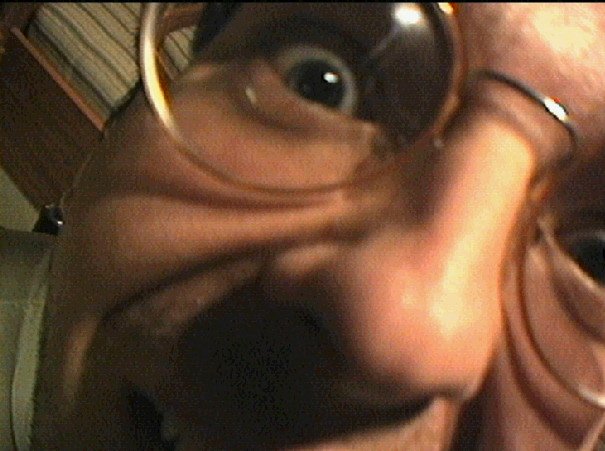 Back to GanjaTron's Site
Back to GanjaTron's Site
Apple ][+
The Personal Computer
![apple ][+](apple2-main.jpg)
[Click to enlarge]
My Apple ][ Experience
I cut my teeth on the
I first came across the Apple (let alone any personal computer) during a presentation given to our class in '80 or '81, for which they actually set up one of the newly acquired units in the classroom -- a rare occurrence indeed, since they were usually kept under lock and key. I got to power the baby up and heard that now familiar sound of the beep and booting floppy. We played a few rounds of Lemonade Stand, presumably because it was deemed educational 'n' stuff.
In 1983 I began programming on the Apple in BASIC and some machine language as an after school activity. There were only about 10 systems as I recall, one of which actually had a colour monitor and was consequently furiously fought over. Another was hooked up to a bulky, wood veneered colour TV via an RF modulator. The rest were an assortment of original Apples and Orange Micro clones with 12-inch green monitors and one (my favourite) with the classic 9" portable b&w monitors. Among the peripherals was a clunky DECwriter, an Epson FX-80 printer, and a "turtle" robot which could carry a pen and be programmed under LOGO. You needed special privileges to get into the computer room, which was locked at all times (for obvious reasons).
Games were strictly no-no's, and our supervisor checked on us regularly to enforce this rule. Those caught playing were stripped of their privileges and banned from the room! Of course that didn't stop us, and we actually posted lookouts at the window to check for the approaching super while the others pounded away with classics like Star Blazer, Choplifter, Repton, Gorgon, Horizon V, and Raster Blaster, just to name a few. If/when the super did turn up, we immediately slammed the RESET key (aptly dubbed "the panic button"). Of course the sound of 10 or so Apples all beeping and booting their floppies in concert the instant you come in isn't the least bit suspicious, is it? :^)
The
![Super with Apple ][+](leonardian81.jpg)
|
Our supervisor with one of the school's first |
I never did manage to call an Apple my own in those days, but many
years later I bought one off a colleague at university (thanks, Norbert!)
and fulfilled my wish. It still sits on my desk and performs flawlessly.
Of all the vintage computers in my collection, the
History
It is said that Steve Wozniak and Steve Jobs laid the foundation for the personal computer industry when they founded and operated Apple Computer out of a garage. While that may be debatable, there is no doubt that they had a fundamental impact on the industry and the direction in which it was headed in the mid to late 70s.
Wozniak was the brains of the outfit, while Jobs was the brawn. The former was the engineering wizard who designed the products, while the latter had the business acumen to successfully market and promote them. In 1976 they introduced the Apple I, a single board computer Wozniak designed around the 6502 microprocessor according to his concept of what a personal computer should be. It sold in kit form, which was not unusual in those days as personal computing was nothing more than an emerging hobby. What set it apart from other computer kits was an integrated keyboard interface and video output (most single board machines at the time had LED blinkenlights and switches for twiddling and displaying individual bits). The Apple I sold in large enough quantities (we're talking just a few hundred units here) for the duo to realise that there really was a potential market for a personal computer.
The followup
![Apple ][ ad](apple2-ad.jpg)
|
An ad for the original |
With an introductory price of $1300 with 4K of RAM, the
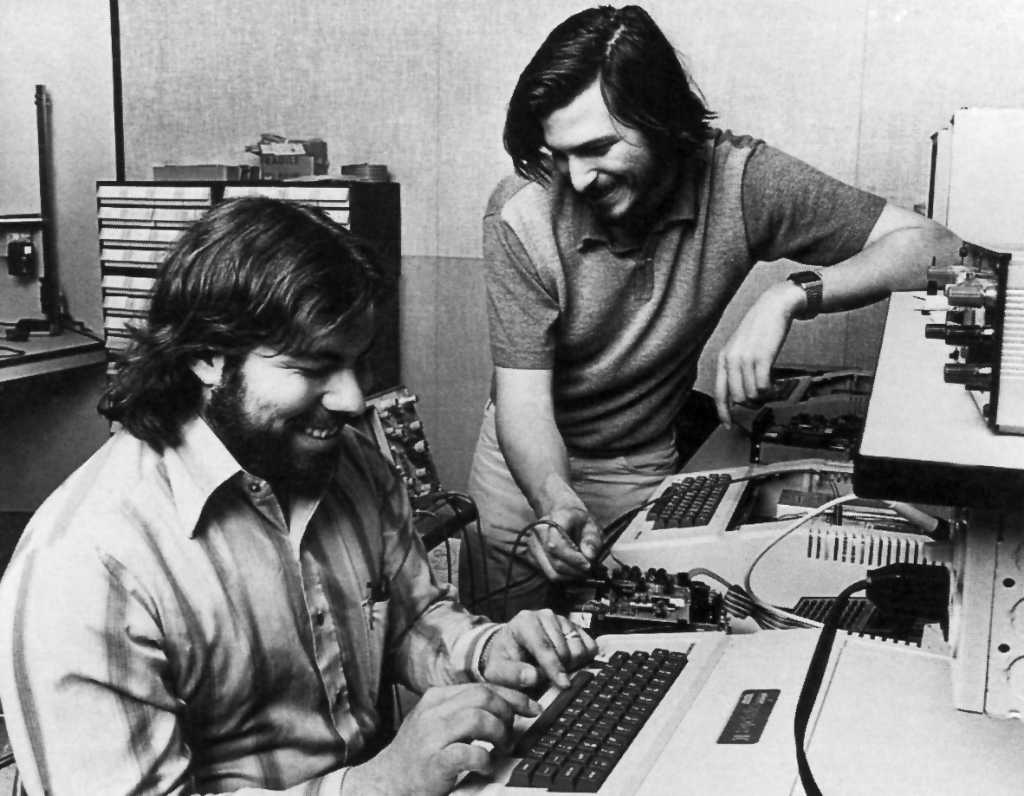
| Jobs and Wozniak (hacking). They appear to be checking a Disk ][ unit with an oscilloscope, which would date the photo some time between 1977 and 1978. Note the classic TI calculator (possibly a TI Programmer) next to the drive [Click to enlarge]. |
The
![Compuserve ad with Apple ][](creativecomp0183-1a.jpg)
|
A smug pair, aren't they? One of a series of innovative and
amusing CompuServe ads from the early 80's depicting personal
computer owners (and of course CompuServe users) from the
computer's bug-eyed perspective, in this case an |
1978 saw the release of the
![Apple ][+ ad](unitedmainliner1281-1.jpg)
![Apple ][+ ad](unitedmainliner1281-2.jpg)
|
A strange ad for the |
Characteristics
For the intents and purposes of its day, the
The sound capabilities are crude, consisting simply of a speaker
connected to a memory location (-16336, a so-called softswitch in
Sound coupled with the hi-res colour graphics and a joystick or pair
of paddles turned the
This machine is a tinkerer's dream, primarily because it's a completely
open system -- literally, as the lid pops off to reveal its innards,
inviting the user to explore and poke around inside! This philosophy is
further reflected in the documentation, which is unlike any computer
reference manual I've seen since, containing firmware routine
documentation, a memory map, expansion slot and connector pinouts, an
overview of the 6502 instruction set, a commented ROM listing, and to top
it off, full circuit schematics! Infact, few computers out there are as
well documented as the
Along with the reference manual came two manuals describing Applesoft BASIC. One is a tutorial for beginners which, on occasion, reads somewhat tongue-in-cheek. Take this brilliant piece of prose from the section covering sound generation:
"Clicks, ticks, tocks, and various buzzes are easily generated. You can make sounds on your Apple if you tap it, scratch your fingers across it, or drop it, but the sounds covered in this manual are produced by programming it."
![Apple ][ Reference Manual](apple2-refman.jpg)
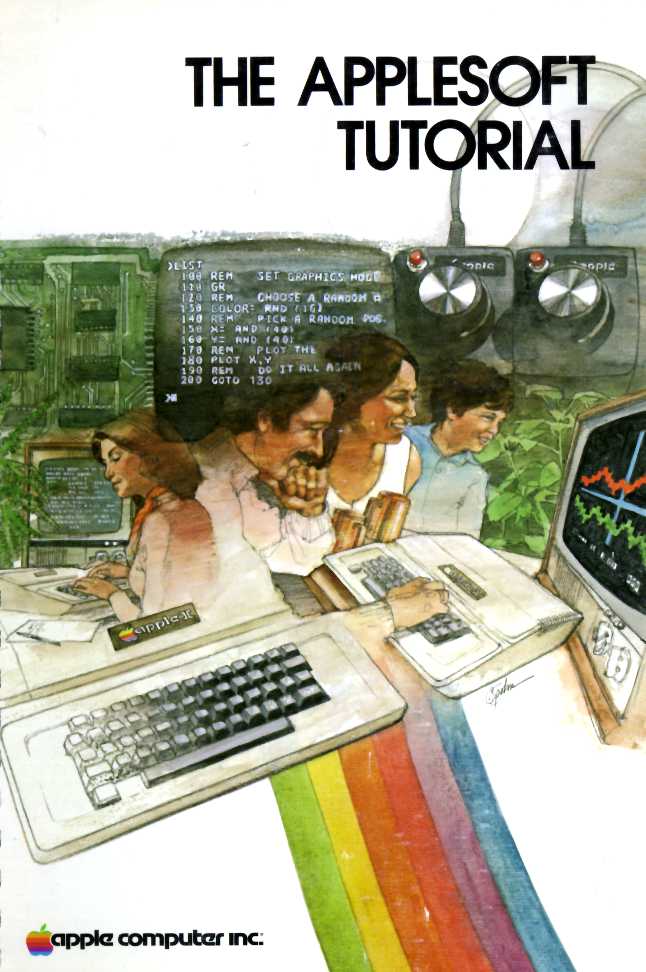
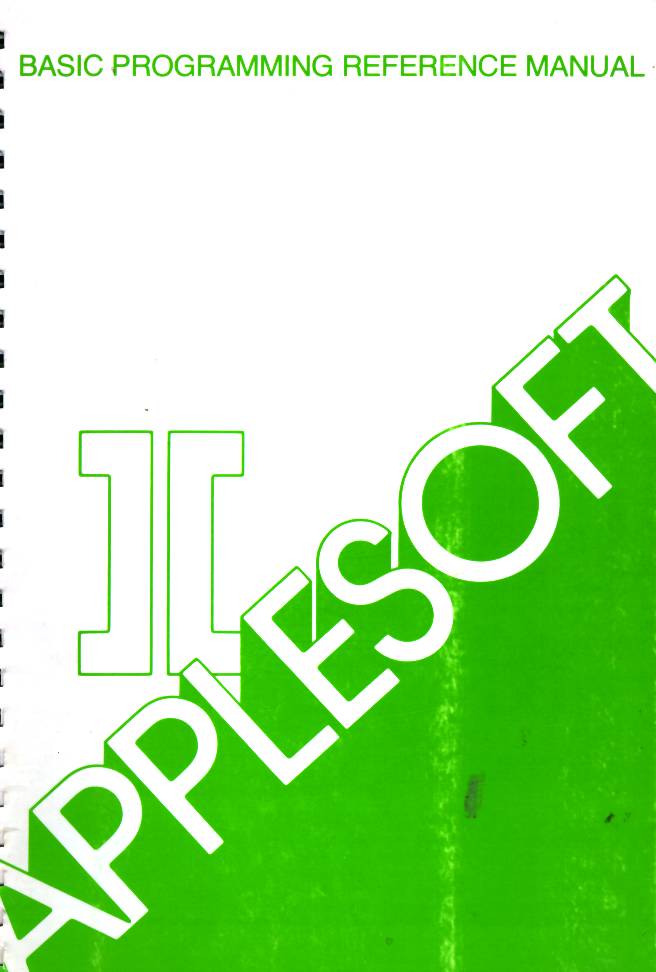
|
|
Since the system used off-the-shelf components, there were no secrets
to be guarded (that changed considerably as home computers with custom
ASICs arrived, which were sparsely documented at best). These factors
encouraged experimentation and exploration, and some pretty nifty add-on
gadgets were developed. This resulted in the evolution of a whole cottage
industry around the
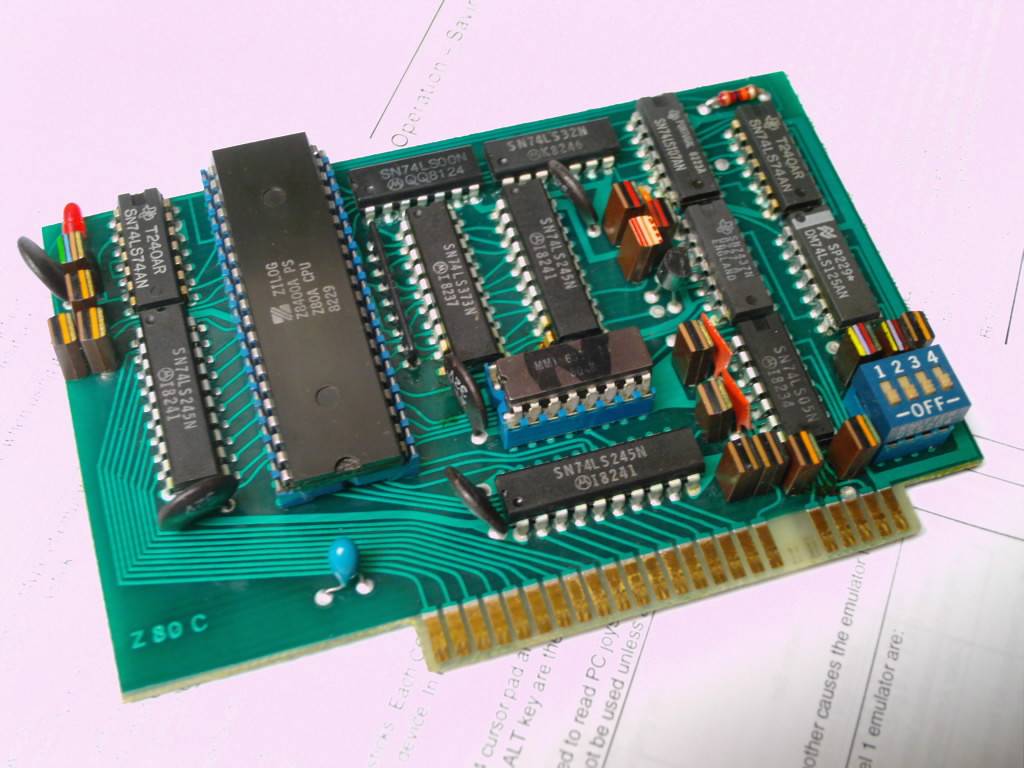
|
A Z80 SoftCard clone. The ability to run industry standard
CP/M applications on the |
Other popular add-ons were the Language Card which plugged into slot 0 and expanded the Apple's memory to 64K (so called because interpreters and compilers usually occupied the upper 16K residing on the card), and the Super Serial Card to connect serial devices like modems and printers. More exotic boards included clock/calendar cards, speech synthesisers (such as SAM), accelerator boards, audio/video digitisers, and even Motorola 68000 coprocessors.
While the
![Apple ][+ inside](apple2-inside1-labeled.jpg)
| Popping off the lid reveals the innards. This baby is loaded! As this is a Europlus, slot 7 at the front is empty and usually reserved for a PALcolour board [Click to enlarge]. |
Hardware Issues
- Power supply failures common, notably contact problems with rocker power switch.
- Fully loaded card slots can overburden the power supply and/or lead to excessive heat buildup in the case; system should then be operated without lid or fitted with a fan.
- The Disk ][ draws its 12VDC supply from the Apple ][ power supply via the disk controller connector; as such, care must be taken when connecting the drive, as misaligning the connector may destroy the drive!
Specs
| Year of introduction | 1978 |
|---|---|
| Retail price | $1200 |
| CPU | MOS 6502 at 1.023 MHz |
| RAM | Up to 64K |
| ROM | 12K with Applesoft BASIC and system monitor |
| Display | 40×24 monochrome text (80 column card optional) 40×48 lo-res graphics (16 colours) 280×192 hi-res graphics (6 colours) |
| Audio | Built in speaker, PWM actuated |
| I/O | Expansion slots (8), composite video out, cassette in/out, analog joystick/paddle connector, auxiliary video for PALcolour board or RF modulator, optional serial and parallel interface |
| Storage | Audio cassette, 5.25" Disk ][ floppy drive (143K) |
| Keyboard | Full-stroke upper case with repeat key |
| Operating system | Proprietary, with Disk ][: DOS 3.3, ProDos, CP/M (with optional Z80 SoftCard), UCSD-Pascal |
| Rarity | Common |
| Verdict | A classic if ever there was one! |
Links
Steve Weyhrich's excellentSteve Woziak's Website!!!
The Unofficial Apple Museum
Apple Forever! (French)
Update:
Apple ][ Sounds & Videos!
Back to Retrocomputing
 Back to GanjaTron's Site
Back to GanjaTron's Site